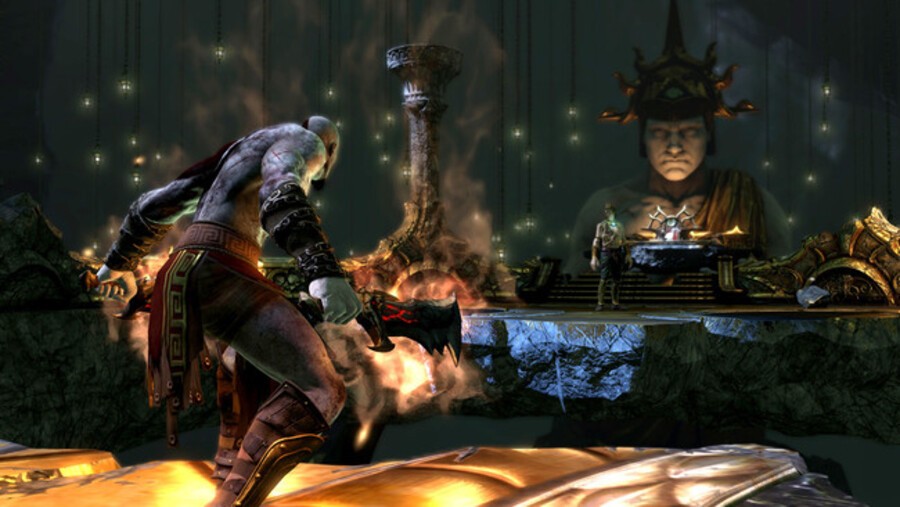
As the impending God of War: Ascension continues its march towards store shelves, we were lucky enough to catch up with lead combat designer Jason McDonald and lead game designer Mark Simon to discuss Kratos’ softer side, online sceptics and, very briefly, PlayStation 4.
Push Square: Hi, thanks so much for taking time out of your busy schedules to chat to us. Just to get started, could you talk a little bit about where God of War: Ascension takes place in the series’ overall timeline?
Mark Simon: It’s the very beginning. The first God of War started ten years after the tragedy with his family, and this happens like six weeks after. It’s before Ghost of Sparta – this is the very, very first entry in the series.
PS: Why did you decide to tell this story now?
MS: This is the particular side and story of Kratos that we wanted to explore. It doesn’t deal with a time where Kratos is this raging maniac; it’s a time where he’s a little bit more human and more of a man. But in order to do that, we had to return to the period in his history where you can be more empathetic with him – and that’s not at the end.
Jason McDonald: Yeah, Kratos just gets betrayed over and over again, as we’ve seen in the other God of War games. This game is able to show a story where that hasn’t happened yet.
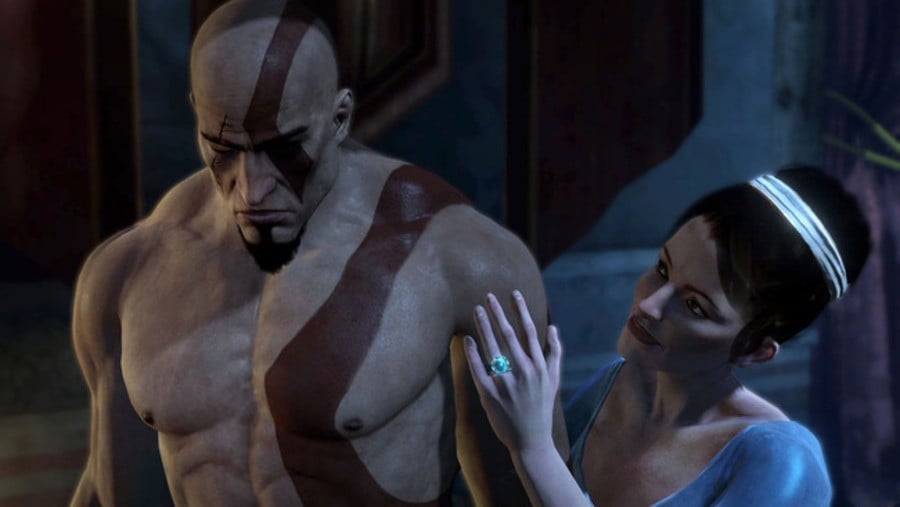
PS: Why did you want to humanise the character so much?
JM: Well, you’ve already seen the Kratos that’s a crazy maniac, right? I mean, God of War III was just a bloodbath. So, ultimately, we wanted to return to the character’s roots to show that he’s actually human too. We don’t talk about it that much, but we allude to it. We mention it in the first God of War when he’s talking about the torment of the Gods and the past and why he’s so angry now. This game is telling the story that we’ve never really mentioned, but we’ve always wanted to.
PS: Let’s talk about the fight against the Hecatonchires at the start of the game. Some people may have seen that set-piece online, and it’s just insane. How do you go about creating a boss of that scale?
MS: It starts in the very beginning where the director wants to go in a couple of different spots and the design team has ideas about where to go. We have ideas for different creatures that you can fight that are based on myth, and Hecatonchires was one of those figures. He has a hundred arms, and a hundred eyes...
JM: Yeah, he’s Titan-sized.
MS: Right. So, immediately we were attracted to that, right? And then we look at how we can push it a little bit further than what we did in the previous games. Where before you were running on Cronos’ arm or you were fighting on Gaia’s shoulder, this time around we wanted to build an entire world on Hecatonchires – and that in itself was a monumental task. For example, we had to get a prison to be perfectly carved out of his forearm, and we had to construct all of the buildings on there.
JM: I think it was one of the biggest levels that we’ve ever done, right?
MS: Definitely. We essentially worked on that entire level from the beginning of the project right through to the end of it. There were certain team members that were dedicated to it from day one.
JM: Early on you want that set-piece that you know is going to grab people, and you design everything around that.
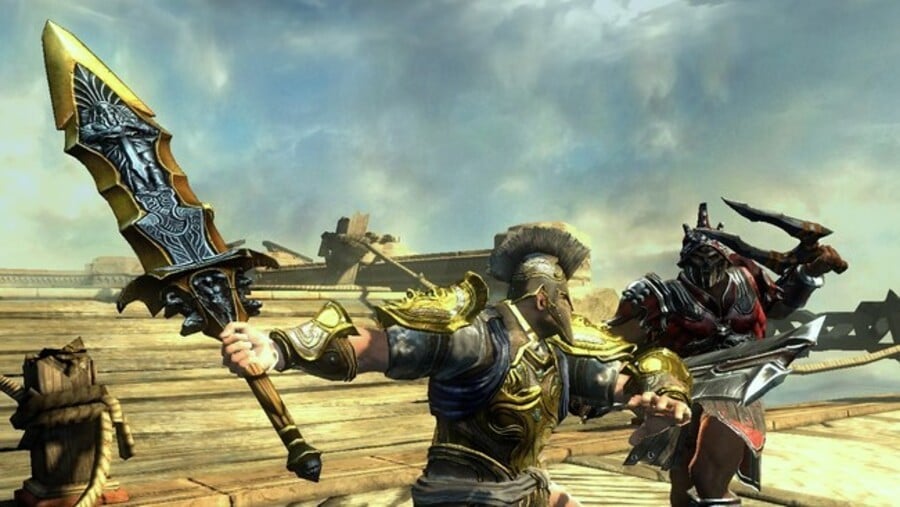
PS: The combat feels a lot faster this time around. Was that an intention from the start of development?
JM: Kratos doesn’t attack any faster than he used to, but I think what you’re talking about is that he’s just a lot more fluid. To be honest, with every God of War we try to refine him just a little bit more. So, this time we added the blade tracking that allows him to aim up and down as he fights. He can also now grab people from a distance, which does speed things up. Now, instead of having to walk over and grab somebody, you can just go right to them. But that was just another iteration of trying to make him as fluid and as accessible as possible.
PS: You touched upon the ranged mechanic, there. That kind of reminds us of Batman: Arkham Asylum and its sequel – were those games an influence at all?
JM: [Laughs]. It actually wasn’t, not this time.
MS: But a cool game!
JM: [Laughs]. Yeah, I think what encouraged us to do that was an early test that we did at the end of God of War III where we wanted to make use of the fact that you have a chain. To be honest, we don’t really use that much other than the fact that you have ranged attacks, so we wanted to add more things that take advantage of that.
MS: It feels natural that Kratos is using these chains to be connected in that way, and the thing that I’m really proud of is that we unified this all on one button. The world interaction and the character interaction are basically using the same thing.
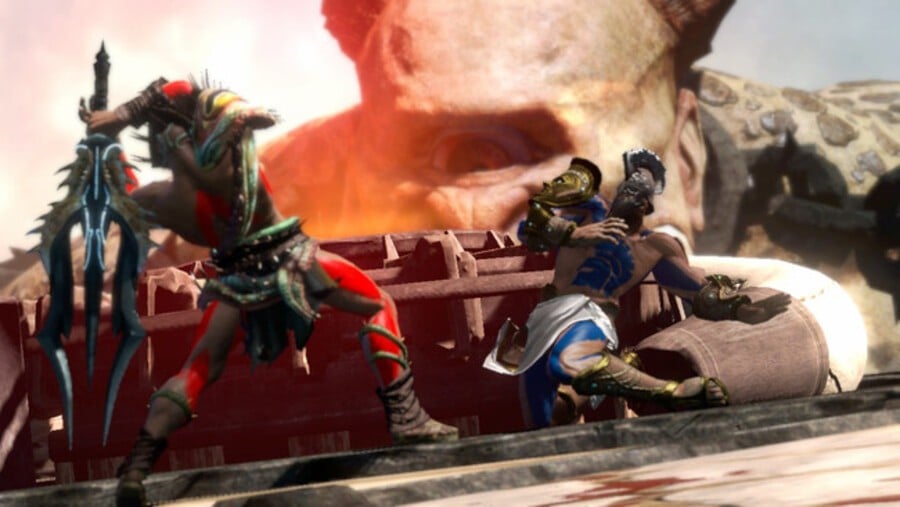
PS: What other titles had an influence on the game? Presumably you looked at the likes of Bayonetta and Devil May Cry.
JM: In terms of the combat, all of those games have an influence because they’re all very good games in the genre. We played Bayonetta, we played DmC: Devil May Cry, and we play all of those games because there’s not that many titles like [God of War]. The Japanese games in particular are very good at having very deep combat, so we definitely look at those for inspiration.
MS: We even play things like Darksiders, as well as the titles that try to mimic us like Dante’s Inferno because we’re fans of those games too.
PS: The whole game feels mechanically smoother this time. Did [director] Todd Papy have an influence on making the sequel feel so much slicker?
JM: There’s no doubt about it. We have a new director for every game and Todd is a designer, so one of the big influences he had was that he wanted to change a lot of mechanics; he wanted to change a lot of the gameplay related items. So, yeah, there’s no doubt that some of that became a priority under him.
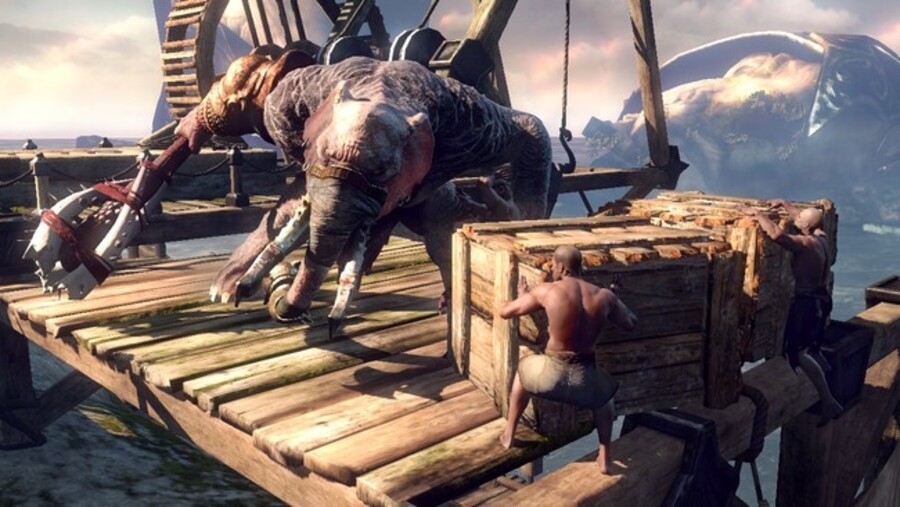
PS: One of the additions you’ve made to the game is Kratos’ ability to pick up weapons within the world. Was that a decision to show the character’s Spartan origins?
JM: Yeah, it was. As Mark said, this game is all about trying to show Kratos’ past. So, before he got the blades he would use weapons like javelins, swords, and clubs. By picking those up, it shows that he still thinks about those weapons, whereas in later God of War games he goes beyond that.
MS: Plus, it makes your combat options and tactics almost infinite. With the different elements that you can switch between, and the different weapons that you can choose to carry with you or discard, it allows everyone to handle battles in a different way. That’s a big change to previous God of War games.
JM: We wanted to make sure early on that you could carry the weapon anywhere, so that when you get to a certain fight you may have a weapon that I didn’t have.
PS: Do you have a particular favourite?
JM: Of the weapons?
PS: Yeah. We’re big fans of the club.
MS: You like hitting home runs, huh?
JM: Actually, I’m a big fan of the shield because it has lots of cool integration with the blades – you can perform some cool combos with those. But the sword is very nice too, because it grinds out more XP allowing you to level up quicker.
MS: Yeah, once you get going with some of the attacks, it feels really satisfying.
Click through to the next page for chatter about elemental powers, online sceptics, and PS4.





Comments 4
This was a very thorough and informative interview. I'm even more excited for Ascension now, and I didn't think that that was possible.
@ThatOneBlackGuy I had more questions, but unfortunately I ran out of time. Glad you enjoyed it!
Interesting interview. Isn't he somewhat mistaken though? Been sometime since I played them but I thought Chains of Olympus was the first game, not Ghost of Sparta.
@belmont I don't think he was insinuating that Ghost of Sparta was before Chains of Olympus, I think he was just trying to highlight that Ascension is before the other games, and Ghost of Sparta just popped into his head. You're right, though.
Show Comments
Leave A Comment
Hold on there, you need to login to post a comment...